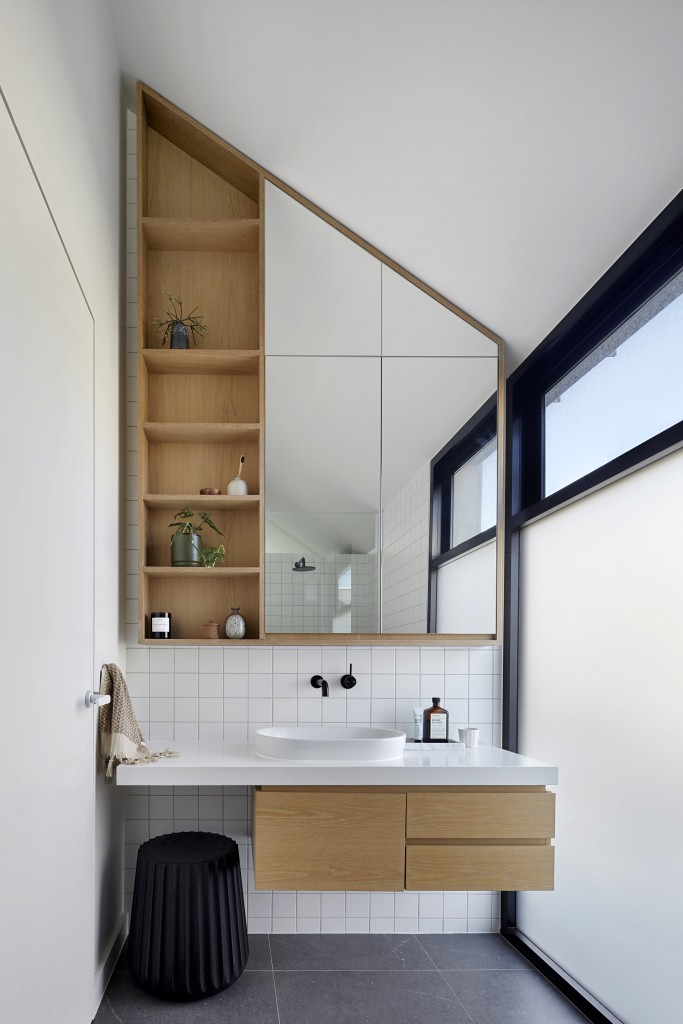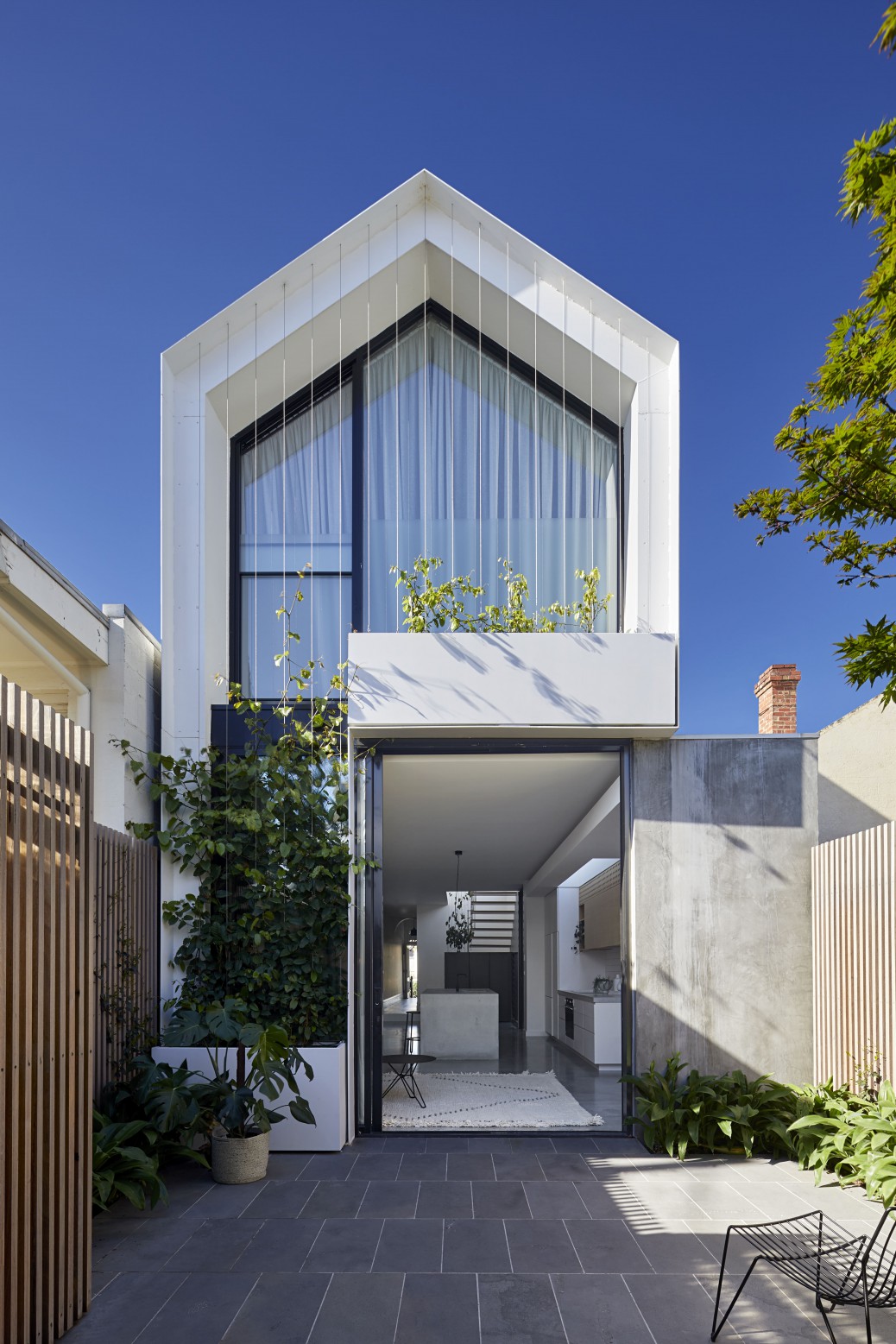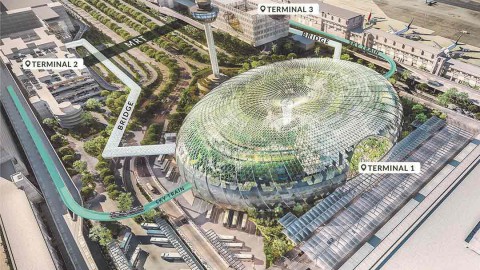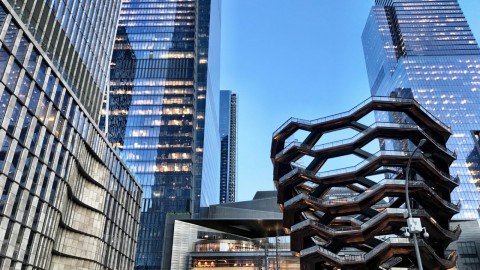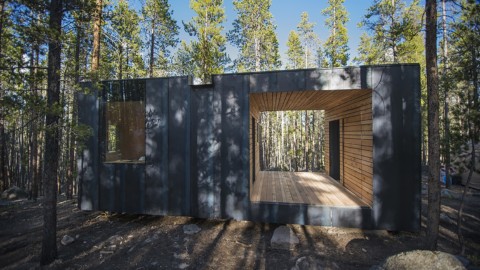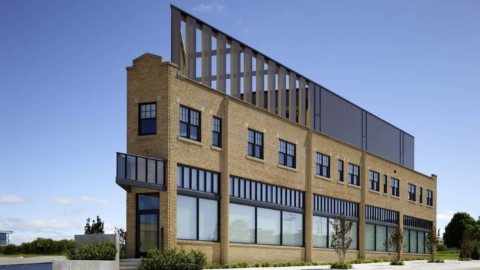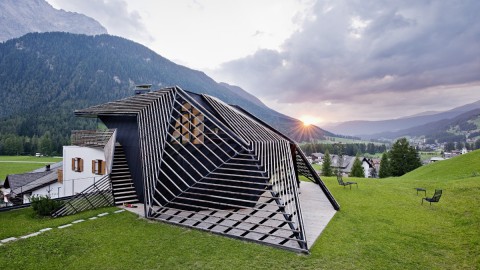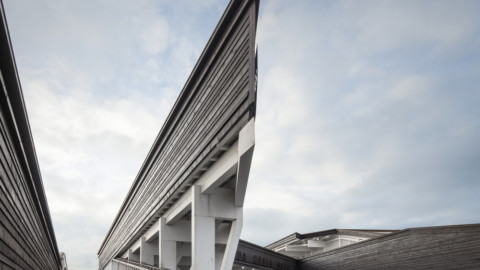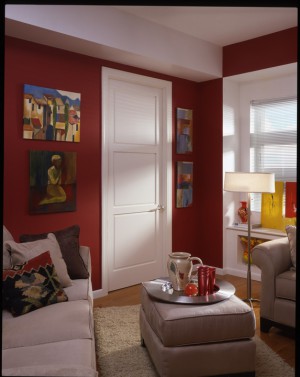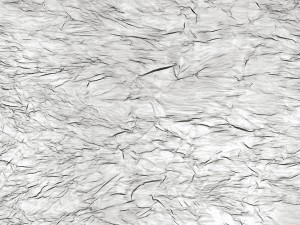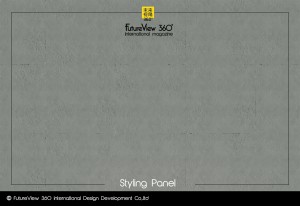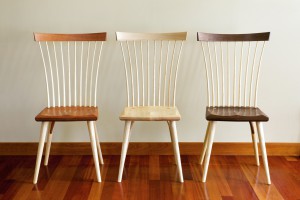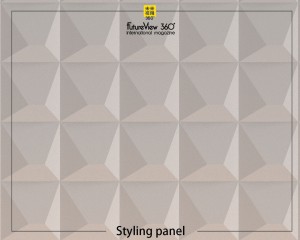The Cable House
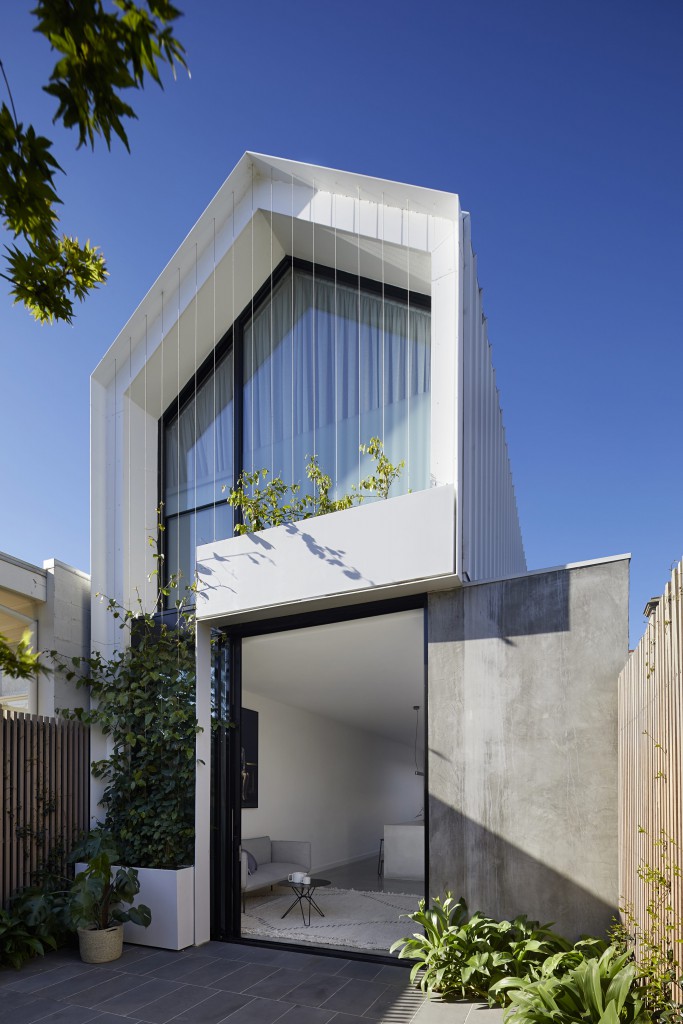
A “typical Port Melbourne worker’s cottage” that faces South, founding director Tom Robertson is frank in characterising the original building as “dark and depressing”. The priority from the very beginning was, thus, to maximise light, air and space. This objective was made all the more challenging by the narrow site. Internally, the home needed to be bright and spacious, while externally it needed to be sensitive to the surrounding area – two competing prerogatives that would seem to be in direct contradiction to each other.
The architects began with a simple gable roof structure, an archetypal architectural form given a contemporary expression through minimalist lines, understated materiality and subtle detailing. The gable roof reduces the building’s impact on neighbouring properties, placing the building’s lowest points on each side, with the highest point in the middle. While the gable roof of the upper storey ensures the elevations are sympthetic toward the surrounding area, for the inhabitants inside the soaring raked ceilings and full-height windows in the master bedroom enhance the sense of space.
面向南方的“典型墨爾本港工人小屋”,創始人湯姆羅伯森坦率地將原建築描繪為“黑暗和令人沮喪”。因此,從一開始就優先考慮的是最大化光,空氣和空間。狹窄的網站使這一目標變得更具挑戰性。在內部,房屋需要寬敞明亮,而外部需要對周圍區域敏感 – 這兩個相互競爭的特權似乎彼此直接相互矛盾。
建築師從一個簡單的山牆屋頂結構開始,一個典型的建築形式,通過簡約的線條,低調的材料和微妙的細節給予當代表達。山牆屋頂減少了建築物對鄰近房屋的影響,將建築物的每一側放置在最低點,中間位置最高點。雖然上層的山牆屋頂確保了高度對周圍區域的影響,但對於高聳的傾斜天花板內的居民而言,主臥室內的全高窗戶增強了空間感。
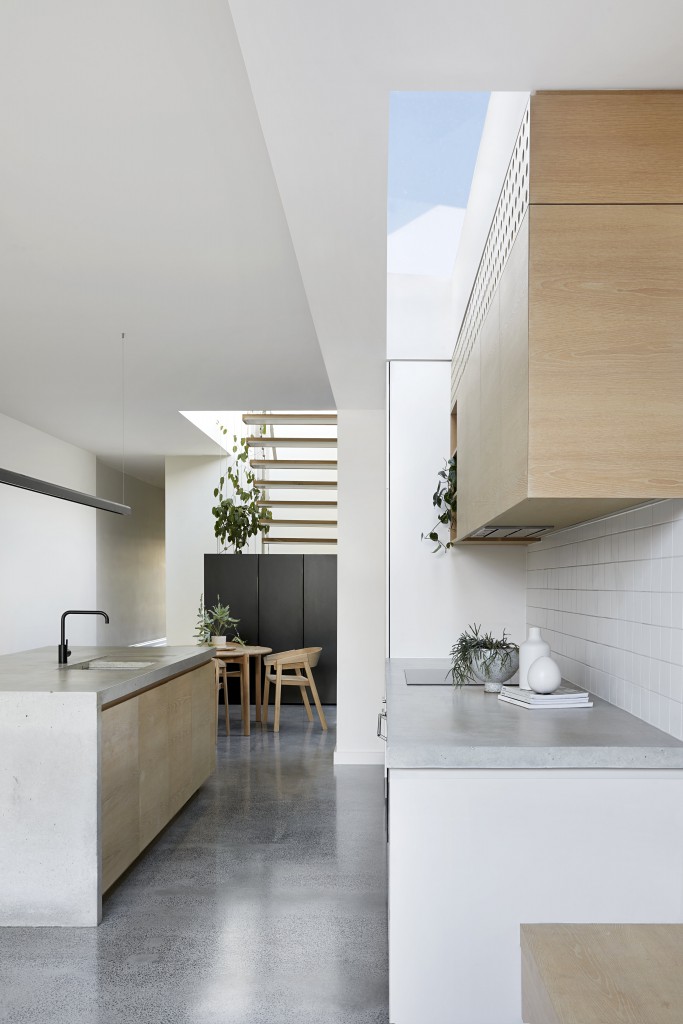
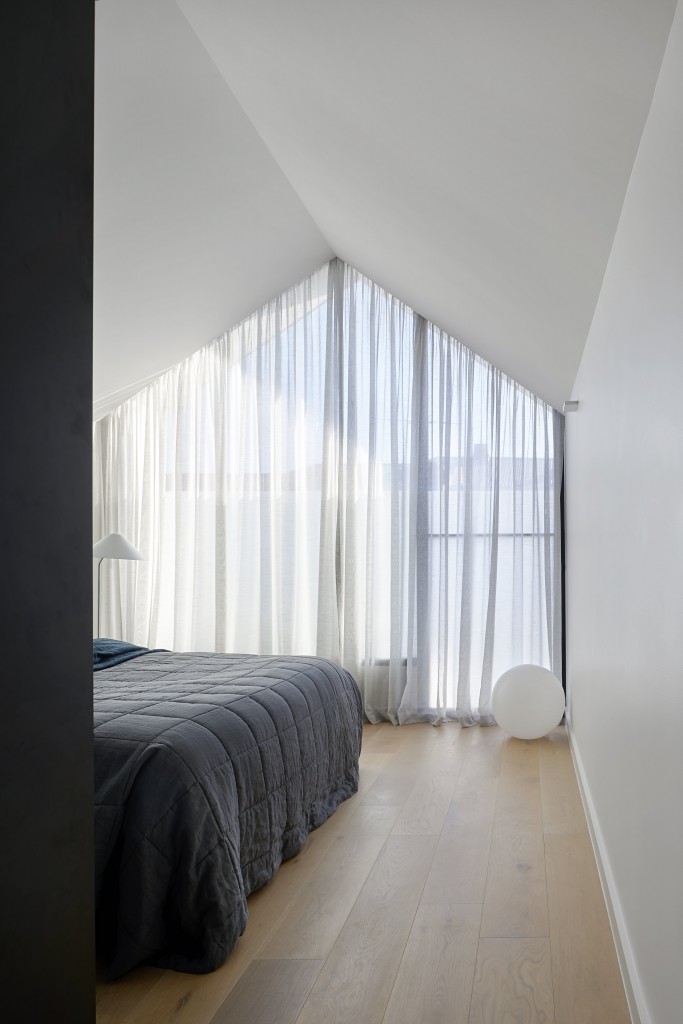
On entering the Cable House, one passes through the heritage portion of the cottage, before stepping down a level into the kitchen, dining and living areas in the new addition. Senior project architect David Ascroft explains that the back of the original cottage was a collection of ad hoc lean-to structures, so these were demolished to make way for the new extension. By stepping the new section down, the architects designed a threshold between old and new, and were able to create a greater sense of volume in the home’s open-plan living space.
進入Cable House後,人們會穿過小屋的遺產部分,然後在新的房間裡進入廚房,餐廳和起居區。高級項目建築師大衛阿斯克羅夫特解釋說,原始小屋的背面是一個臨時的精益結構的集合,所以這些被拆除以便為新的擴展讓路。通過踩下新部分,建築師設計了新舊之間的門檻,並且能夠在家庭的開放式生活空間中創造更大的體積感。
![]()
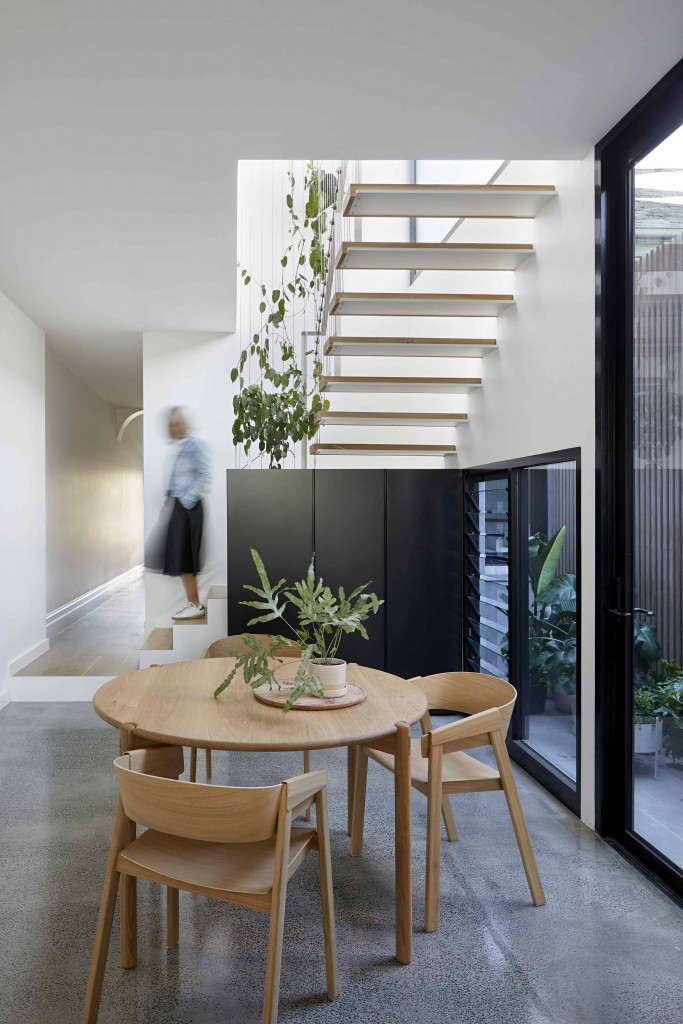
The priority for Tom Robertson Architects from the very beginning was to maximise light, air and space.
Tom Robertson Architects從一開始就優先考慮的是最大限度地利用光線,空氣和空間。
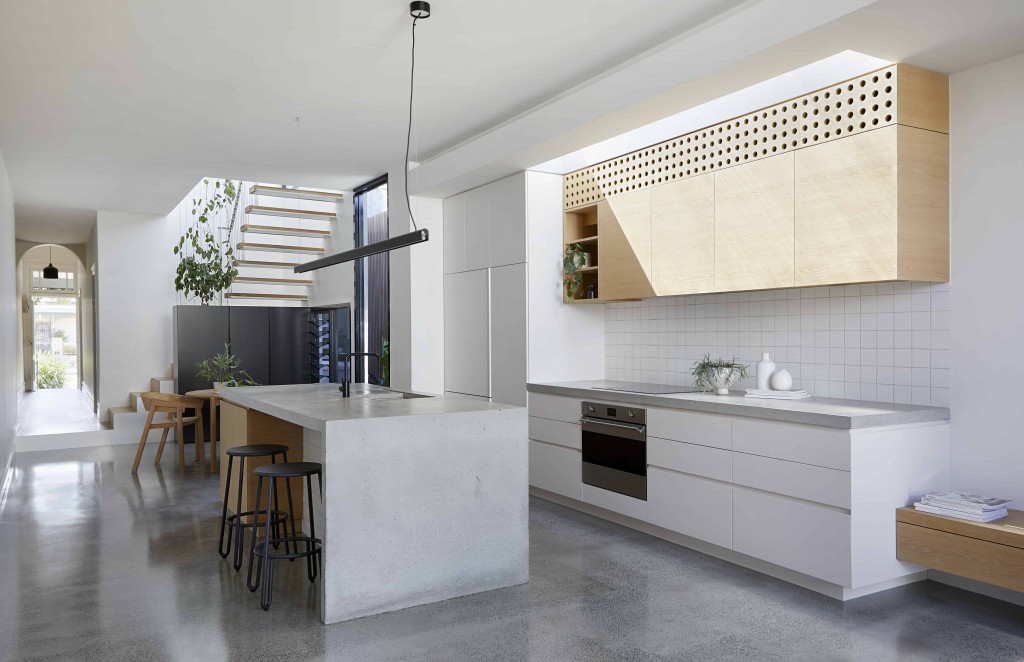
On such a small site, the main courtyard is correspondingly small, so the architects had to find other creative means of connecting the Cable House to nature. The dramatic facade, which could have easily created a looming presence over the small courtyard, is softened by steel cables trellised with vines that will eventually cover much of the exterior. With in-built planter boxes to house the vines, the line between architecture and garden becomes blurred.
David describes this as a “pragmatic” choice born of the needs of the clients’ young family who wanted an outdoor space for dining and room for the children to play and ride scooters, which further constrained the space available for landscaping. The steel cables covered with meandering vines are reintroduced internally, where a planter box is built into the joinery and steel cables are interpreted as the stair balustrading. This vibrant greenery in the center of the home again seeks to make the garden a living part of the architecture, a simple yet effective response to the challenges created by the tight urban site.
在如此小的場地上,主庭院相對較小,因此建築師必須找到其他創造性的方式將電纜屋連接到大自然。戲劇性的外立面很容易在小庭院中形成一個隱約可見的外觀,由用藤蔓格柵化的鋼絲軟化,最終將覆蓋大部分外部。使用內置的種植箱來容納葡萄藤,建築和花園之間的界限變得模糊。
大衛將此描述為一種“務實”的選擇,這種選擇源於客戶年輕家庭的需求,他們想要一個戶外用餐空間和兒童玩耍和騎滑板車的空間,這進一步限制了可用於景觀美化的空間。覆蓋著曲折藤蔓的鋼索在內部重新引入,細木工箱內置於細木工,鋼索被解釋為樓梯扶手。這個充滿活力的綠色植物在家中心再次尋求使花園成為建築的生活部分,這是一個簡單而有效的方法,可以應對緊張的城市場地所帶來的挑戰。
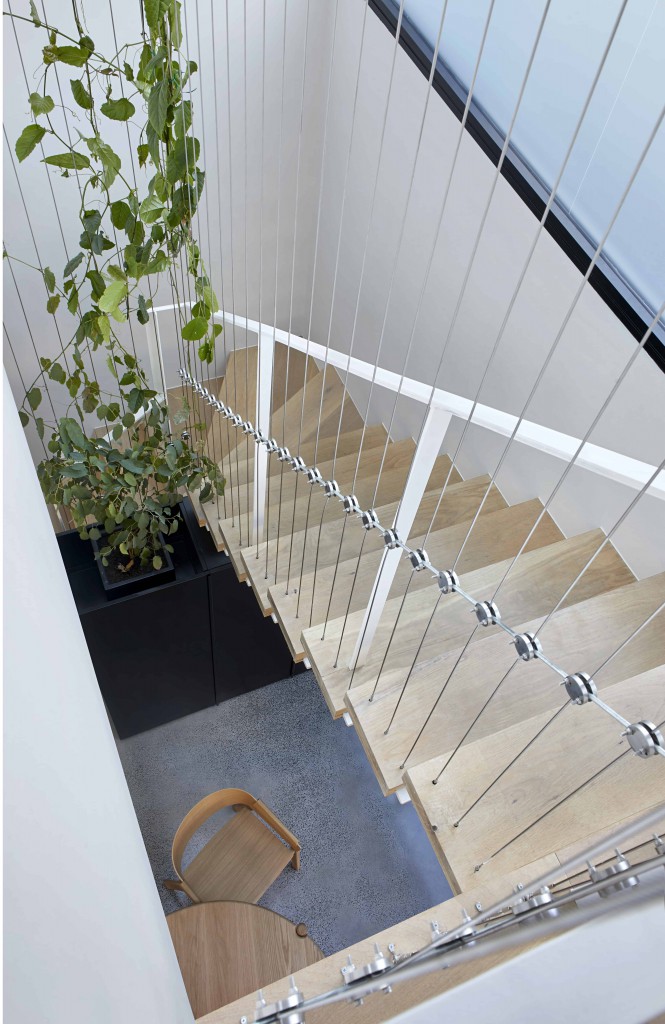
The trellis vines become a part of the project’s material palette, which the architects kept deliberately restrained. “For such a small-scale project it was important not to get too ‘busy’ with too many materials”, explains Tom. “We kept it pared back and simple”. David agrees that “normally, we use a lot of black but in this context, it was too dominating and aggressive”. Instead, the design is predominantly white inside and out, creating a crisp, calm and contemporary atmosphere, against which the oak joinery and trellised greenery become more pronounced. The use of oak “warms the space”, says David, while concrete for the floors and benchtops is solid and grounding, creating continuity with the external use of concrete on the ground floor, where solid concrete walls ‘bookend’ the kitchen and living space.
格子藤蔓成為項目材料調色板的一部分,建築師一直刻意保留。 湯姆解釋說:“對於這樣一個小規模的項目來說,重要的是不要太忙’太多’。” “我們一直保持簡單”。 大衛同意“通常情況下,我們會使用大量的黑色,但在這種背景下,它過於主導和激進”。 相反,設計主要是內外白色,營造出清新,平靜和現代的氛圍,橡木細木工和格子綠化更加明顯。 大衛說,橡木的使用“溫暖了空間”,而地板和檯面的混凝土堅固而且接地,與底層混凝土的外部使用形成了連續性,堅固的混凝土牆壁’廚房’和生活空間。
